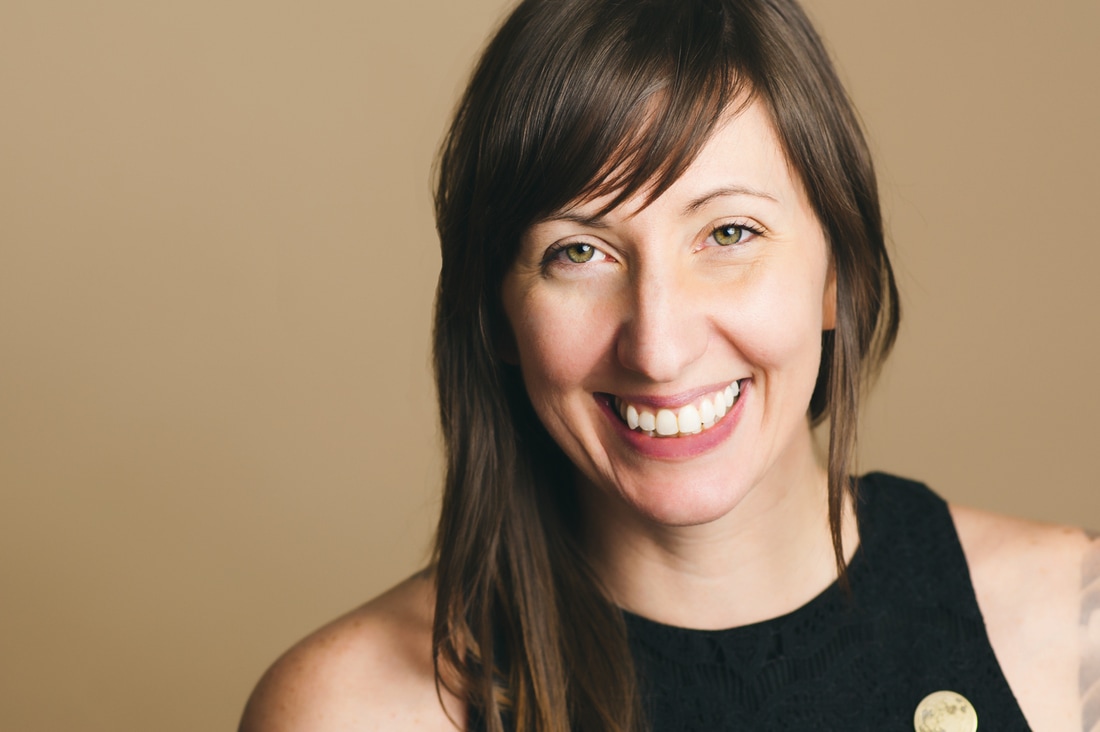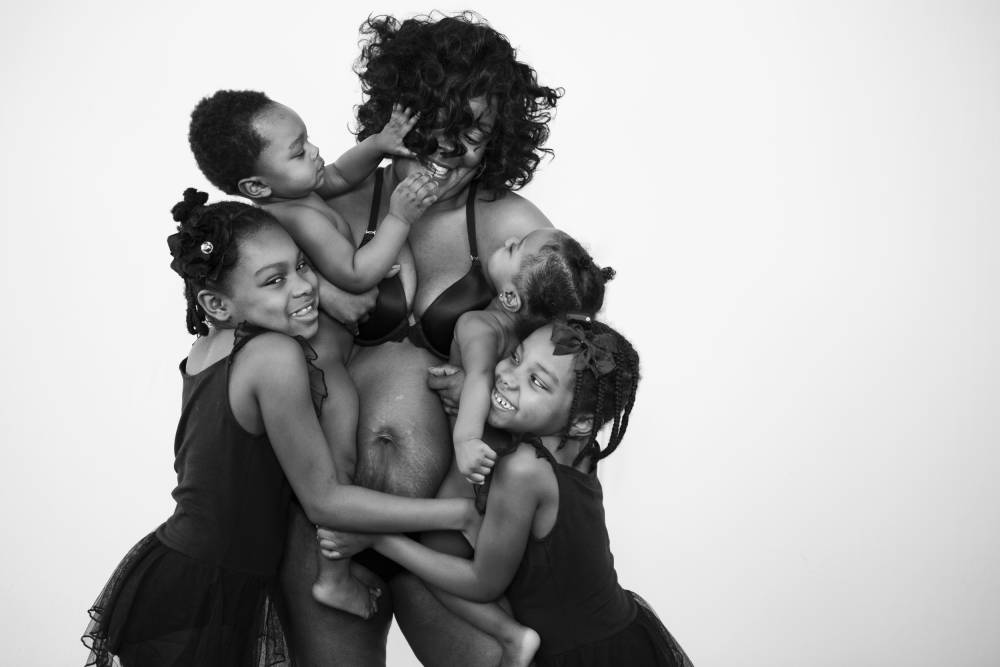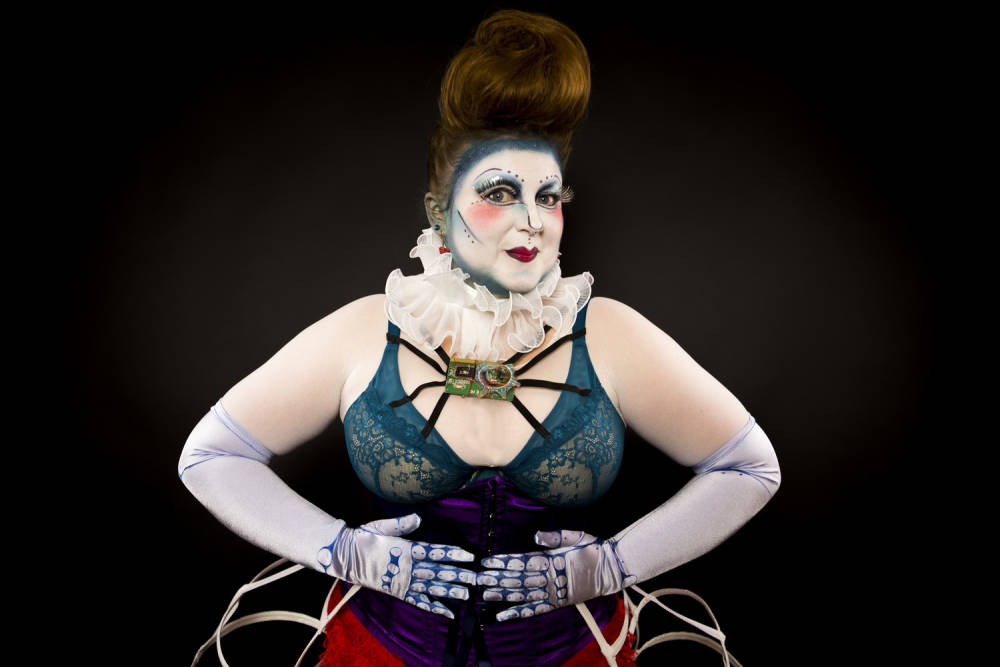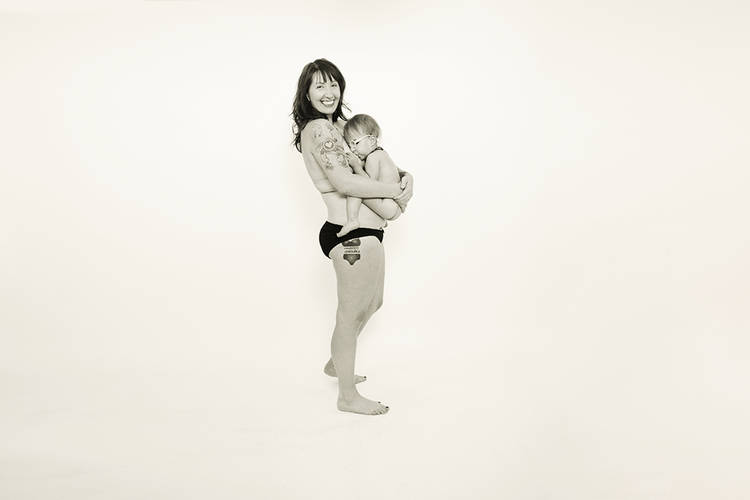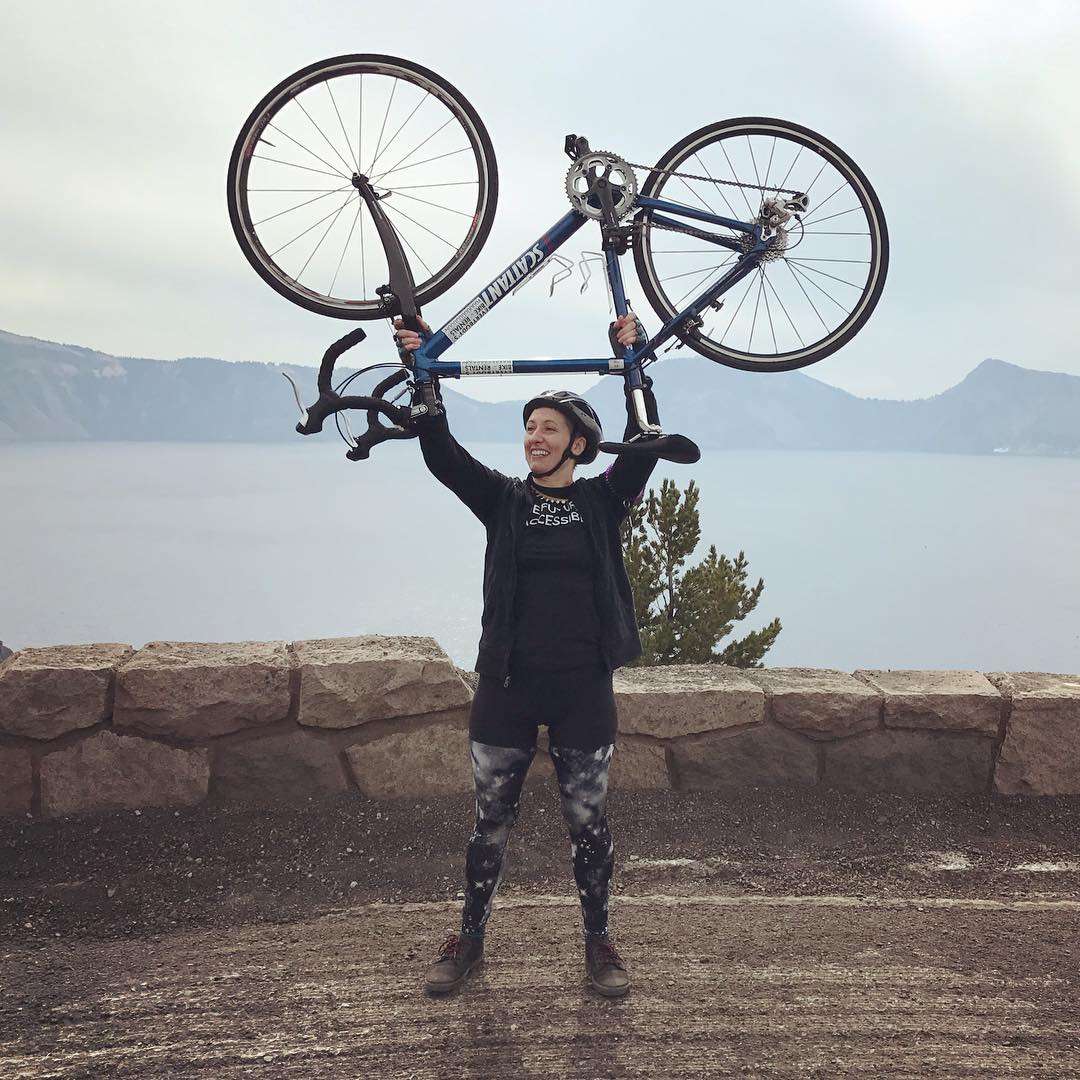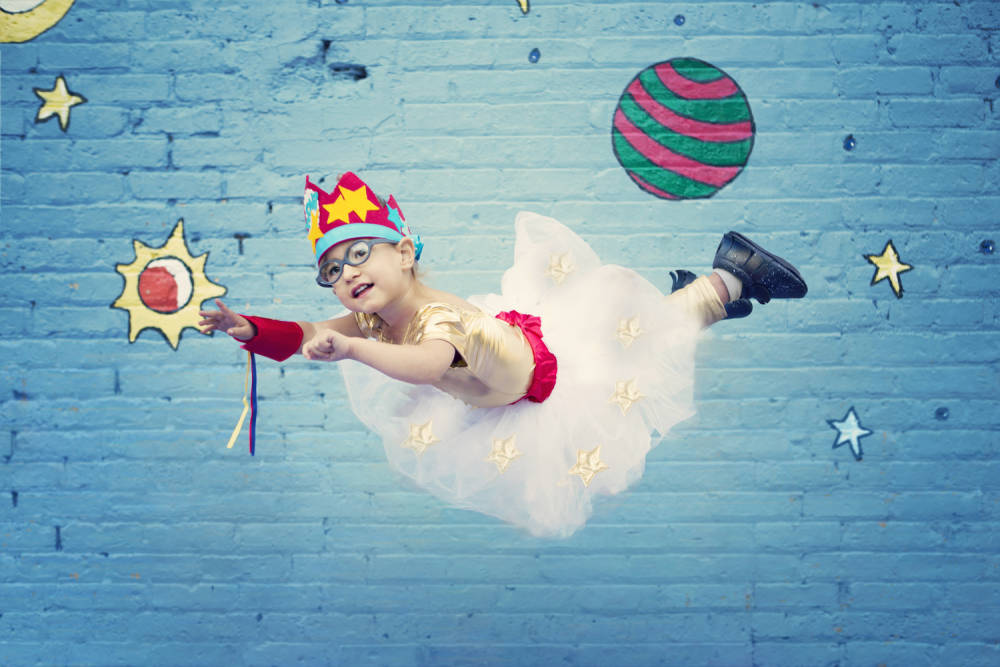How did you get your start in photography? I have always been a camera bug. One of my first memories is hiding in our coat closet and pulling down my parents’ Polaroid, running through a whole cartridge of film just because I liked the sound and seeing the film come out the front. After getting in trouble for that, my dad got me a camera and taught me how to use it, and I became the family photographer. I come from a mixed family, right in the middle of five kids, and I always had a camera with me.
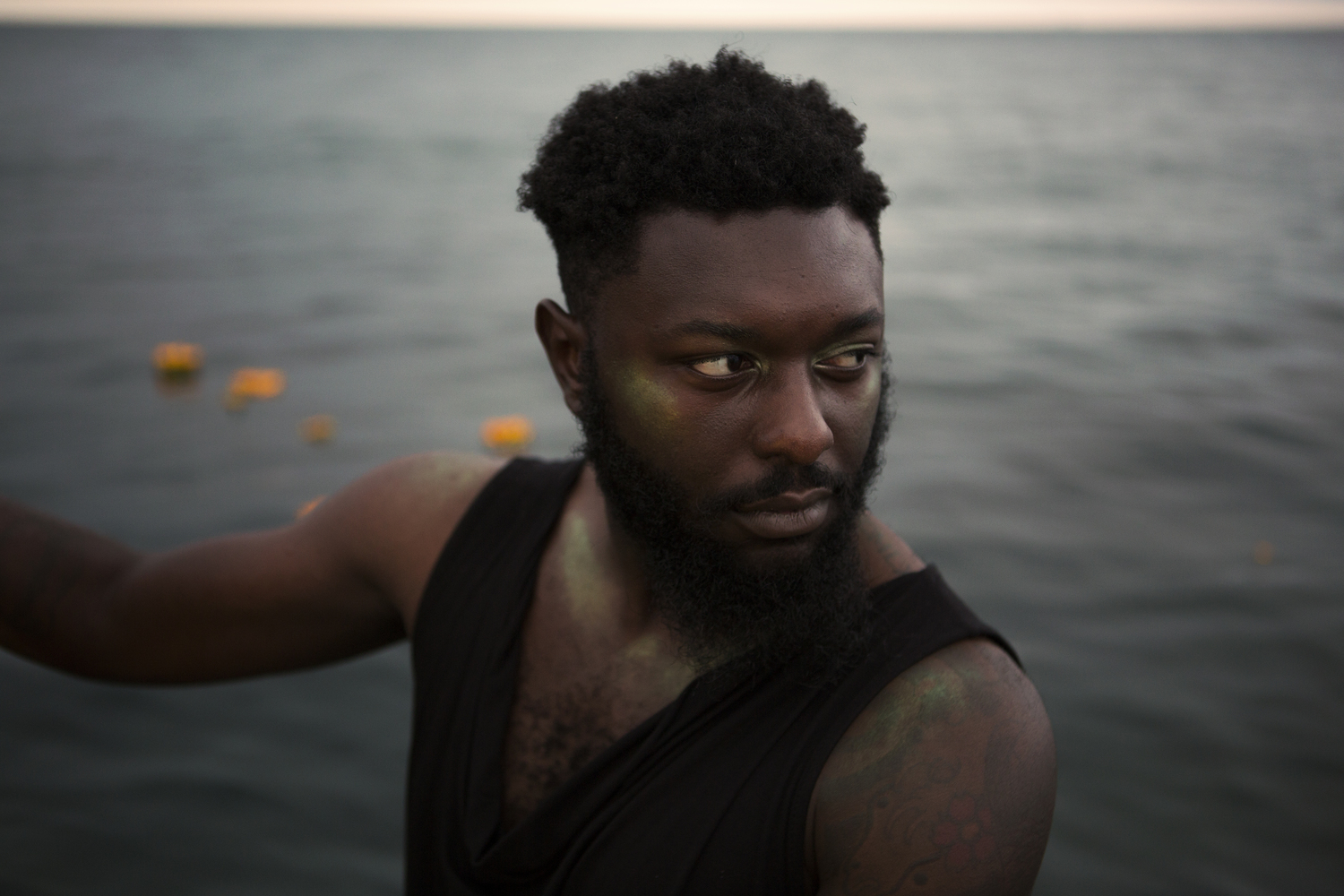
My dad was always really supportive. He was an artist himself, but put art aside to work and support his family. It was always really important to him to cultivate our artistic sides. When I was about 15, he introduced me to a friend of his who was a wedding photographer, and I began second shooting weddings, my first foray into professional gigs. I went to university for photography, but I dropped out because I started getting paid work. I had a hard time reconciling that with the tuition I was paying.
Since then I am grateful to have been able to continue working in the field I chose. I’ve had little stops and starts here and there, but I’ve been mostly self employed for the whole of my adult life. I’ve done commercial work, portrait work, documentary work, and here I am now.
I’ve owned a pin-up and boudoir studio in Chicago for the past seven years, and for awhile I was co-working with my daughter’s father shooting commercial work for a production company here in Chicago. Then about five years ago, I had a huge shift in life circumstances that took my career in a new direction with the 4th Trimester Bodies Project. I thought it would be temporary, but it has been all that I’ve been working on for the most part for the past five years.
Did you grow up in Chicago? I grew up in Valparaiso, Indiana, about 45 minutes outside of Chicago. I always wanted to get away from here. I graduated high school early, when I was 16, and left right away. I went to Southern California, came back. I went to Austin, came back. I think I’ve finally reconciled that as much as I hate the cold, there’s something about the Midwest that keeps calling me home.
Tell us a little bit about your family. I am currently living with my partner, who is the most amazing human I have ever met. We are getting married in May. My eldest, Xavier will be 12 in December, and Nova, a surviving twin, is five. Her identical twin, Aurora passed away in 2012 due to complications from Twin to Twin Transfusion Syndrome (TTTS). We are hoping to have another baby next year.
What is Twin to Twin Transfusion Syndrome (TTTS), and how did it affect your pregnancy with Nova and Aurora? TTTS is a placental share disorder that happens almost exclusively in identical twins. While identical twins always share a placenta, they can also share an amniotic sac, or they can have their own amniotic sacs. My twins shared a placenta, but had two sacs. What happens with TTTS is that the blood flow in the placenta just gets confused. Rather than them each getting independent blood flows from me, they start sharing blood flow between one another, and one baby gets too much of everything. That creates a demand on the placenta to make an excessive amount of amniotic fluid. The other baby gets too little of everything. Their amniotic fluid will dissipate, and without adequate blood flow, they don’t grow as they should.
There are five stages of TTTS, and unfortunately it comes on very quickly. From the time I learned I was carrying twins to my diagnosis was ten days. And in those ten days, my babies went from perfectly healthy to Stage Four TTTS. Stage Five meaning that one or both of the babies have already passed. It’s a thing that happens, and it’s a shit thing.
There isn’t anything you can do to prevent it other than screening. Once you’ve been diagnosed, the options aren’t great. There is some benefit to trying a fetal laser surgery, which we did. But it’s very often fatal for one or both of the babies once you’ve been diagnosed. It’s one of those things we had no idea existed until we got the diagnosis.
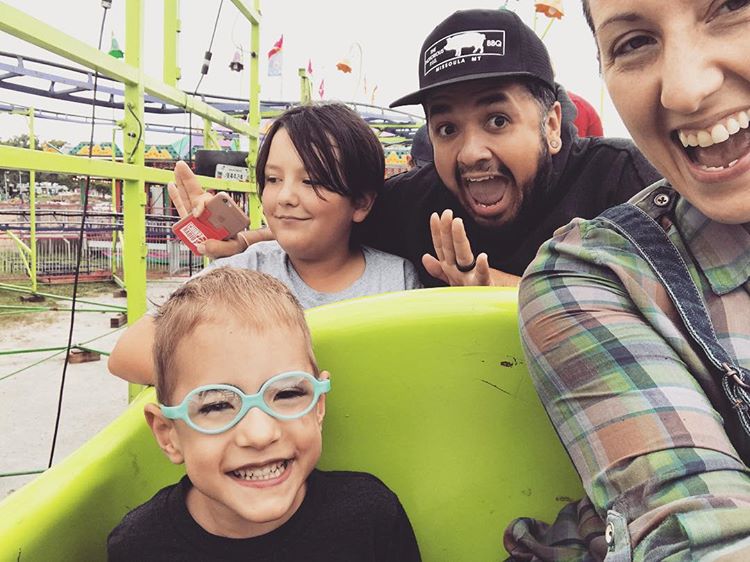
It is remarkable that you went through this experience and came away from it so strong. What was your pregnancy like with your first born, Xavier? Xavier was born at 28 weeks, and it’s one of those things that nobody has an explanation for. I was 23, young and healthy. Everything was great. My midwife made jokes throughout my pregnancy that I was a textbook pregnancy, always measuring exactly where I should have been.
The night Xavier was born, I called her and told her I was feeling kind of funny. In hindsight I was already in labor. I had a tilted uterus that didn’t totally correct, and I was having some back pain and feeling kind of sleepy, kind of nauseous. She told me to drink some tea and lay down, and call her in an hour. She called me back in a little over an hour and I was lying in bed and couldn’t speak. My son’s dad picked up the phone and the midwife said if I couldn’t talk I needed to be at the hospital.
The hospital was less than five minutes away, so we drove there. I had to convince them that I was in labor, because I was only 28 weeks. They told me to sit down and I couldn’t sit down. I knew something was happening. They took me upstairs and my waters were bulging. That was the only thing that was holding him in. I was fully dilated, ready to go.
Very quickly I had to wrap my head around the fact that it was happening; this baby would be here. I had never known anyone that had delivered prematurely. It was not on my radar and I hadn’t done any research on it. It was horrifying in the moment.
We were young. Both my son’s dad and I are heavily tattooed and unfortunately there were a lot of assumptions made about us in the hospital. It felt like we had to prove we were good people and good parents, which was an unfortunate step in the process. We were both drug tested without our knowledge, because they were certain that I must have done something to cause this. But, by the time we left, everybody knew and loved us, and invited us back to speak for other families.
All that being said, it was a really easy experience. He was a feeder and a grower and he did really well. He had a couple small health scares but for the most part his NICU journey was fine. Forty-six days for a 28-weeker is nothing, and since he came home he’s been happy and healthy and has hit all of the milestones typical kids hit. Sometimes I forget that he was such an early preemie.
Were you working as a photographer when you had Xavier? I was. I was doing freelance photo work, and I also have a background in marketing and advertising. I was doing some ad sales and marketing for a music website.
I was fully self employed, which was nice. When you’re self employed and find yourself in a troublesome situation, you have the benefit of stepping away or putting things on pause, but also nothing moves without you. I felt a lot of pressure to jump back into things before I was ready. I am grateful that I was able to adapt and create the space that was needed to care for him and still work.
How soon did you go back to work? The whole time he was in the NICU I didn’t do any work. Once he got home I immediately started doing shoots with him on my back in a carrier, out in the field. I did work with him at my breast throughout the day. There was no rest once he was home.
How was that transition for you? It was good. I am a do-er and a go-er. I have a hard time carving out space. There was a very short stint where I thought maybe I could be a stay-at-home parent, but I also had a company, sewing and selling baby slings. I didn’t intend for it to grow, but it did, and I had to keep up with demand and I just couldn’t slow down.
I think it was all good for me and good for him. It was nice to bond with him and be present and be home with him, but still be working and fulfilling that part of my identity. It has allowed us to be much more cohesive, without me feeling resentful or like I missed out. I haven’t necessarily needed to put my kids in childcare to work at the same time, which has been really nice.
“I’m fortunate to be surrounded by my partner and my kids, friends, family and community that are just interesting, on-fire, creative people.”
What inspires you in your work? I really like working with people. I never intended to be a studio photographer, and I like to get out of the studio into new spaces. I feel like I’m constantly just chasing ideas. I’m fortunate to be surrounded by my partner and my kids, friends, family and community that are just interesting, on-fire, creative people. I’m quite an introvert, so I like to be in spaces and just listen and soak in ideas. I’m inspired by other people’s energy.
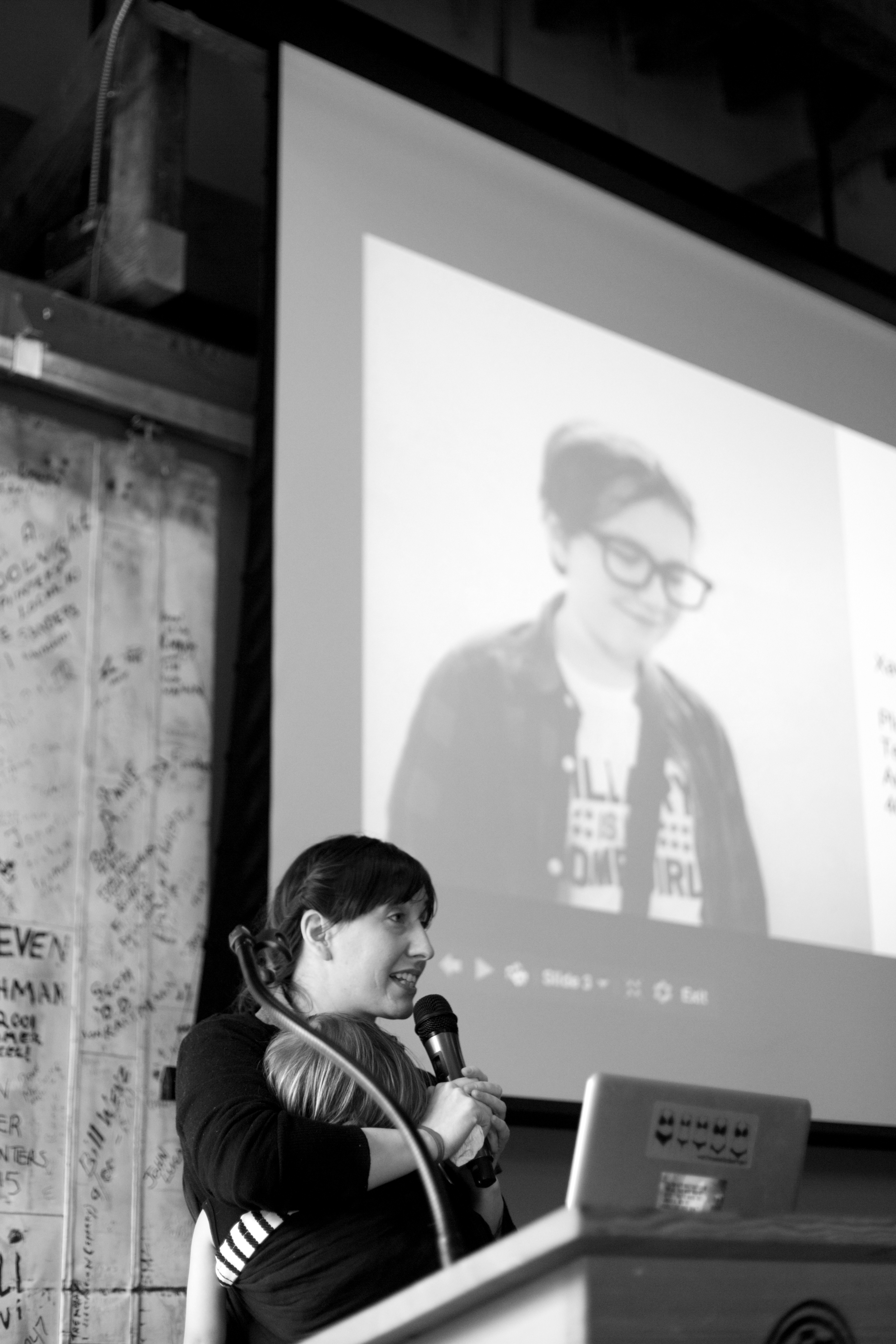
How did 4th Trimester Bodies Project start? I was doing commercial work and pin-up work. I was super busy, probably the busiest I’ve been in the whole of my career. Then I got pregnant by surprise, but I was okay with it. I never had intended for Xavier to be an only child, but his dad and I split, and our lives went in different directions. I come from a big family, and always knew I wanted a big family myself. So I got happy and ran with it.
Everything was great until it wasn’t. I learned around 17 weeks that I was carrying twins, and then 10 days later we got our TTTS diagnosis. Within three days I was sent to St. Louis for surgery. Aurora died within 24 hours. Then I was sent home for monitoring. There wasn’t a lot they could do.
Some doctors will misinform you, saying that it’s just like carrying a single baby, but it’s not. When you’re pregnant with twins and one dies, you are still pregnant with two babies, it’s just that one of them is dead. It’s a mind trip. It was really difficult to navigate that, knowing that one of my children was dead inside of me and the other one was growing. The hope was that I would carry to term and nothing else would go wrong.

Unfortunately I picked up a massive E. Coli infection from that surgery, which put me into labor at 24 weeks. I ultimately delivered by emergency cesarean, and was thrust back into the NICU world, this time with a baby that was really sick and really small. I knew that babies born that early can suddenly die, and I was faced with the reality that this baby might die too. We were on autopilot for months.
“Nova came home after 100 days, which is pretty phenomenal.”
Nova did awesome, especially since she had a massive brain bleed and we were told she would not make it. Nova came home after 100 days, which is pretty phenomenal. I actually fought really hard to bring her home. I couldn’t hack it at the hospital anymore, doing that dance between work, and home with another kid, and the hospital. We probably came home much earlier than they would have liked, but I fought, and once we got home I was able to put work on pause.
I hired a backup photographer to shoot my pin-up stuff. My business partner kept emails and everything else going for me so that I didn’t have to fully close my studio. But that also meant that once I was home, I had to jump right in. Nova was in the sling or the bassinet, and I was back to work the next day. It was tougher than it was with Xavier, because Nova came home with a lot of special needs. I was still grieving and growing and navigating everything.
I have a picture of the day that we walked out of the hospital, and you can just see it on my face: the first time that it hit me that I was only bringing home one baby. It sounds weird. We had Aurora cremated. I had her urn in my bedroom. It was obvious. But there was something in the back of my mind that said I was going to leave the hospital and suddenly, magically, both babies would be there. In that moment, leaving the hospital, reality hit. And it was hard.
My cesarean had remained infected, and needed to be revised and then heal open, which is just as gruesome as it sounds. Aside from the emotions of premature delivery, raising a kid with special needs, dealing with loss and stillbirth, and a shift in family dynamics, I had gone from being a very body-positive person to loathing my body.
The work that I’ve done with pin-up and boudoir with women has exposed me to a lot of the insecurities that we all walk around with. At the time I couldn’t see what these women were talking about. These beautiful, gorgeous humans come into my studio to have this experience, and embrace themselves. It didn’t jive why they were simultaneously picking themselves apart. I had people say I couldn’t photograph their wrists because they were too spindly, or to please not shoot from the left side of their face because the right side is the “good side.” And when we would do bachelorette parties working in groups, it was even worse. The dialog between my partner and I was always about how to create a body positive space, a feminist space. If you look at our website, we talk about being body positive, and the fact that we don’t retouch images beyond simple blemish corrections. People know that the space they’re walking into is meant to embrace and empower them exactly as they are.
But in the moments after coming home with Nova, it hit me like a ton of bricks. The dialog that those women were having was suddenly the same dialog I was having with myself, and I hated it. I didn’t like being touched or hugged. I stopped looking at myself from the bust down. I felt like a failure. I felt like I had failed as a woman and as a mother. I couldn’t keep my babies alive. I couldn’t give birth to them. I couldn’t heal properly. We struggled with breastfeeding. There were all of these things, most of them not truthful, but all of them felt like the screaming truth. I was not okay with that.
“I needed to change the conversation, for me, for my children, for whoever my partner was going to be.”
It took me being in that place to finally understand how painful having that dialog constantly running through your head really is. I wanted to change that. I needed to change the conversation, for me, for my children, for whoever my partner was going to be. And I wanted to change it for everybody else in my community as well. The messages sent to us from the media are not lost on me, or anybody living in the world today. It’s getting better, but it’s there.
Through the grieving and healing process, I had gone to Google in the middle of the night to look up cesarean scars and stretch marks because my body was so foreign to me. There wasn’t any positive visual representation. I found some medical images, and “before and after” photos of people wanting to get their bodies back, but I didn’t find anything that was beautiful or empowering or anything that felt like me. It all just made me feel bad.
Being a visual person, there was also a lot of intentionality of changing that perspective and representation, working to create this massive archive of what bodies actually look like. I also wanted to layer it with stories.
When my twins were born we were in a space of life where a lot of friends were getting married and having babies for the first time. Suddenly people who had been around for most of my life suddenly fell off the planet. There was so much stigma and so much shame on this horrible thing that had happened to us that was no fault of our own. But, it also opened the door to all of the realities of other people that I had no idea about. As soon as I said “my baby died,” my grandmother, my family members, my friends, my friends’ moms, started talking about the fact that his had happened to them too. So, sharing my story, my truth, my experience and just holding the space for anybody and everybody else to do the same, we realize that all of our paths are interconnected but unique at the same time.
It’s so easy to feel isolated or alone, but it’s not the case. There are people out there just waiting to say “me too, me too!” But we don’t often exist in spaces where that feels safe.
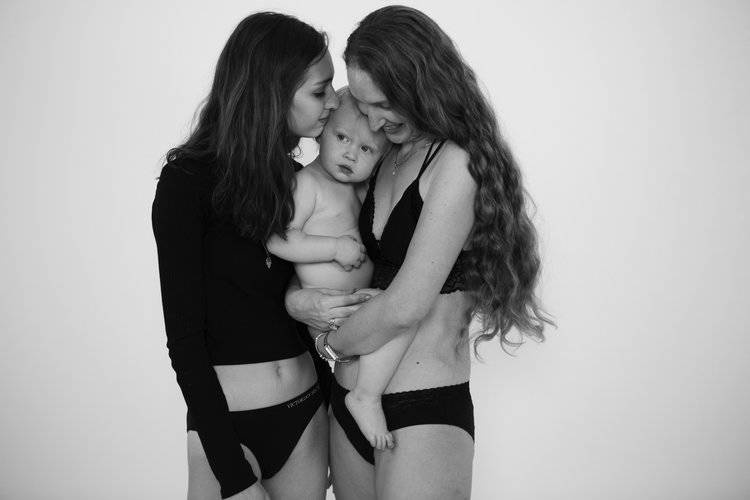
Nova was five months old, and I was in my studio one day just kind of processing and thinking about all of this, and I took a picture of me in my underwear nursing Nova. I put it on my personal Facebook page and there wasn’t a lot of thought behind it at that point, other than just wanting to shift this paradigm. I thought maybe if I could get ten friends to shoot with me and share their stories that we could do a show or put together an album or something.
The interest was great, so I decided to try to work with 100 women. About six weeks in, Huffington Post broke a story about the project and my business partner and I woke up to over 6,000 emails from women all over the world wanting to know how they could be photographed. It is a very vulnerable thing to ask somebody to come into a space that is foreign and take off their clothes, take off their child’s clothes and show their face and be photographed, and then to go a step beyond that and talk about their experience. I thought it would be hard to get participants. I didn’t think people would be knocking down our door.
It’s heartbreaking and so beautiful that that was the response. And I’m grateful again to have just been in a space and time when I was able to completely shift gears. I wound down my pin-up schedule. I opened up my schedule to start working on 4th Trimester Bodies Project shoots, and figured out how to travel and reach the communities that were calling for us to come there. It all grew and happened very organically. It feels like a whirlwind and sometimes still like a dream that it’s all happened the way that it has. But it’s amazing. I’ve met so many incredible people. We’ve been able to tour internationally as well as all over the states and Canada.
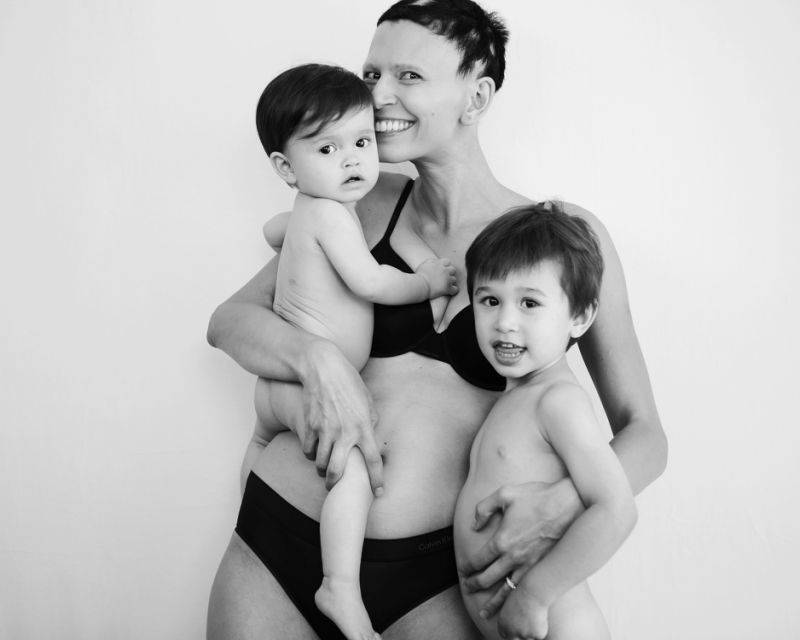
How do you see the project evolving, moving forward? About a year ago, I pretty dramatically shifted gears from doing private sessions to doing community photo shoots and gatherings, which has been really amazing.
Representation in the project was always very difficult, and I was never comfortable with that. We were constantly having a conversation about how we could represent more people of color, people with disabilities. How do we represent trans parents? I’m queer myself, so not having a big representation from the queer community was also something that we struggled with. Shifting gears a little bit, and still doing what we’ve been doing, but in a community space, has just opened the door to get more stories, more bodies, more people, more trans parents, queer families, more women of color. It’s been really nice to work on the same project with the same mission and goals, but make sure that we’re being a lot more intentional and intersectional.
We are not always so good at embracing each other when we’ve gone through something that is difficult or uncomfortable. Having worked with so many women through the 4th Trimester Bodies Project, what can you say about how we can do a better job of supporting each other? I think so often we get stuck in our own heads and our own belief systems. Getting so wound up in that, we become hardened to other folks around us and other experiences, means of connecting. I am a person with a very strong political belief system. I work with people every day who don’t see things the same way I do, and I’ve learned to just let go of that. It’s been a really powerful experiment in learning from each other.
We have a private Facebook group of people who have participated in the project: women, trans parents, older children of participants, people from all over the world with different belief systems. Some are very religious, some are very liberal. People from different family dynamics and family units. This is a space where people bring up their greatest challenges and greatest joys, and not once have we had an issue with people being rude or judgmental. It’s all about unconditional support.
In such a digital age, so many of us are isolated in our own communities, and the internet can be a major way that we come together to connect with other people. So often there can be a feeling of hostility that exists in the same space. I don’t know if it’s the vulnerability that goes into the project that makes it a safe space, but it does exist there and it’s been a good case study for what happens when we just let go and allow ourselves to be open and vulnerable. To accept other as they are coming to us.
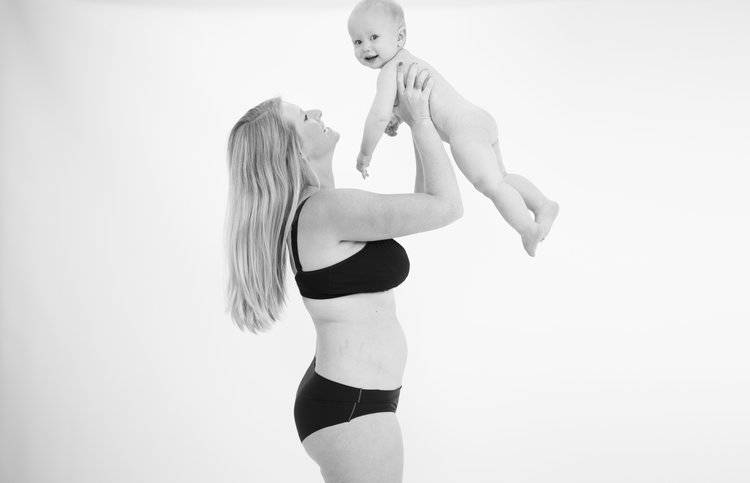
After having gone through what you’ve been through with your pregnancies, how do you find your strength? Nature. I am a city person, but there are times when I feel like I cannot hear one more car horn, one more L train. I need to get out. My work allows me to travel a lot, so my partner and I have been building off days into our trips. We will go to the nearest state park or national park for a night or two. Nature is where I feel like I can breathe and let go.
“Nature is where I feel like I can breathe and let go.”
Also, people. I work with so many amazing people who inspire me on a daily basis, namely my kids. My tiny humans are amazing people and I will forever say that they teach me more than I ever hope to teach them. Sometimes I wonder, what if I had been raised differently? What if I had been allowed to be the person I am now at a younger age? Would I have jumped into motherhood so early? Would it have been such a priority? Part of me feels like it wouldn’t have been, but at the same time I can’t imagine going back, because who I am is so much of who they are. They have forced me to grow.
How do you manage Nova’s special needs with the logistics of your business and family life? It’s not pretty. I will tell you that. I have a therapist who keeps me going. Every Tuesday at 1:00, and if one of us needs to cancel it feels like an emergency. She reminds me often: You’re not just a mom. You’re not just a photographer. You’re also a case manager. On average, Nova has anywhere from four to ten appointments every week, on top of school and my work, and travel. What works is being flexible. I don’t have any set ideas about how the day will go or what time I will be at this place or that, or how many things I’ll scratch off my to-do list, because in my life, that’s a recipe for disaster and I will end up feeling disappointed in myself.
Nova developed a brain bleed in the NICU that caused profound hydrocephalus. We were able to intervene and change the diagnosis from “not compatible with life” to the silliest, sassiest five year old human I have ever met. But it’s not easy. Nova will forever have a VP shunt to help manage hydrocephalus, and at two she was diagnosed with cerebral palsy, a very common diagnosis in preemies with traumatic brain injuries. She also has some growth issues.
When you have a kiddo with a certain set of special needs, you’re constantly adding specialists to the list, because nothing is routine. We learned a long time ago that you take therapy appointments when they give them to you, not when it works for your schedule.
The first three or four years of the project, Nova traveled with me, which was amazing. But now that she’s started full day pre-K, she chose to stay home and keep going to school when I travel. It’s a learning experience. There is a lot of prep work that goes into being able to travel and work away as much as I do. But it’s all worth it. Every day Nova is doing more things that they said she never would.
“Be willing to be vulnerable and embrace what that brings to you and who it brings to you. None of us are doing this on an island, and you are not alone in this.”
What advice do you have for other Mother Makers? Find some community. Celebrate what you’re doing and put yourself out there. Be willing to be vulnerable and embrace what that brings to you and who it brings to you. None of us are doing this on an island, and you are not alone in this.
